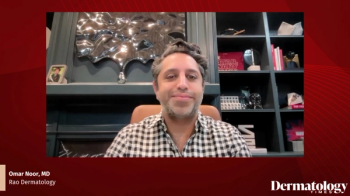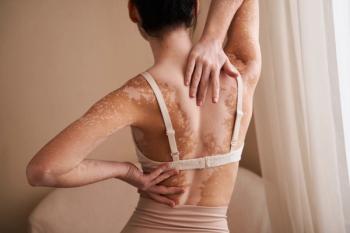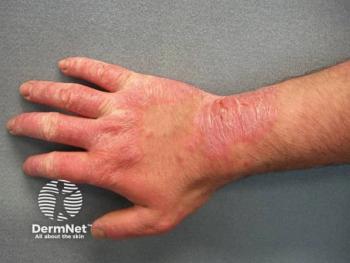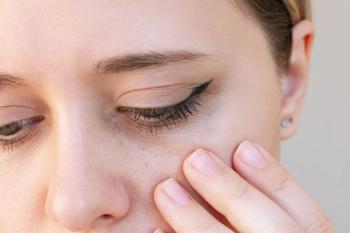
Cutibacterium acnes Dominates the Post-Laser Skin Microbiome
Key Takeaways
- C. acnes remains dominant in the skin microbiome post-laser and topical treatments, suggesting resilience and potential benefits for skin health.
- The study observed a stable microbial landscape, with C. acnes increasing from 80% pre-treatment to 74% post-treatment.
Researchers reveal the resilience of Cutibacterium acnes in the skin microbiome post-laser treatments, suggesting its beneficial roles in skin health and aging.
In a poster presentation at the recent Music City SCALE meeting held May 14-18 in Nashville, Tennessee, researchers shared new findings highlighting the resilience and potential beneficial roles of Cutibacterium acnes (formerly Propionibacterium acnes) within the skin microbiome following laser treatments and topical therapies.1
The study highlighted the persistent predominance of C. acnes post-procedure and suggests that its modulation may have more far-reaching implications for skin health and aging.
Background and Methods
C. acnes has long been implicated in acne vulgaris; however, recent evidence indicates that it also plays vital roles in maintaining skin homeostasis.2 Notably, specific strains of C. acnes possess antioxidant properties and may inhibit pathogenic bacteria through biofilm regulation, contributing to skin barrier integrity and wound healing.3
Despite the efficacy of laser-based skin procedures such as fractional CO2 laser resurfacing, the impact of these therapies on the skin’s microbial composition, particularly the role of C. acnes, is not fully understood.
The current pilot cohort study aimed to evaluate how laser treatments combined with topical carboxytherapy influence the skin microbiome, with a focus on the prevalence and potential functions of C. acnes.
Patients who had been undergoing laser resurfacing in conjunction with topical carboxytherapy using the CO2 Lift Mask were enrolled. Participants were divided into treatment and placebo groups, with skin samples collected from the malar cheek regions at baseline (pre-procedure) and 4 weeks post-treatment. Sample collection involved skin swabbing, followed by shotgun metagenomic sequencing processed through CosmosID’s bioinformatics platform.
Findings
The results revealed a stable yet quantitatively altered microbial landscape. At baseline, C. acnes was consistently dominant, representing approximately 80% of the skin microbiome across all specimens.
Post-laser and topical therapy, this dominance persisted: in 83% of cheek swabs, there was an increase in the total percentage of C. acnes compared to baseline. Specifically, the mean percentage of C. acnes increased from about 80% pre-treatment to 74% at 4 weeks. Six out of 8 specimens (75%) still identified C. acnes as the predominant organism post-treatment.
Other microbial inhabitants showed variability but less consistent prevalence. Corynebacterium, for instance, was present in 6 baseline samples with an average relative abundance of approximately 14%. Post-treatment, Corynebacterium’s average proportion decreased slightly to 10%. Staphylococcus was detected in 2 of 6 specimens at baseline, with an average prevalence of 3%, diminishing marginally to 2.5% after therapy.
The relative abundance of other genera like Fusobacterium, Rothia, Leptotrichia, and Campylobacter remained low and variable, indicating a resilient microbial community skewed heavily towards C. acnes.
Researchers also observed differential shifts in microbial composition between the treatment and placebo groups, but overall, C. acnes remained the dominant bacterial species after intervention.
Conclusions
While these results are promising, several limitations warrant mention. The sample size was modest, limiting broader generalizability. Additionally, the study did not differentiate between pathogenic and beneficial strains of C. acnes, which could have divergent roles.
Future investigations that delineate C. acne's molecular functions and interactions within the skin microbiome could revolutionize personalized skin treatments and help optimize aging skin therapies.
References
- Villamaria E, Hernandez-Rovira B, Wyles S. Characterizing skin microbiome diversity following co2 laser and topical carboxytherapy: a dichotomous role for Cutibacterium acnes. Presented at: Music City SCALE; May 14-18, 2025; Nashville, Tennessee.
- Platsidaki E, Dessinioti C. Recent advances in understanding Propionibacterium acnes ( Cutibacterium acnes) in acne. F1000Res. 2018;7:F1000 Faculty Rev-1953. Published 2018 Dec 19.
doi:10.12688/f1000research.15659.1 - Rozas M, Hart de Ruijter A, Fabrega MJ, et al. From dysbiosis to healthy skin: major contributions of Cutibacterium acnes to skin homeostasis. Microorganisms. 2021;9(3):628. Published 2021 Mar 18.
doi:10.3390/microorganisms9030628
Newsletter
Like what you’re reading? Subscribe to Dermatology Times for weekly updates on therapies, innovations, and real-world practice tips.



















